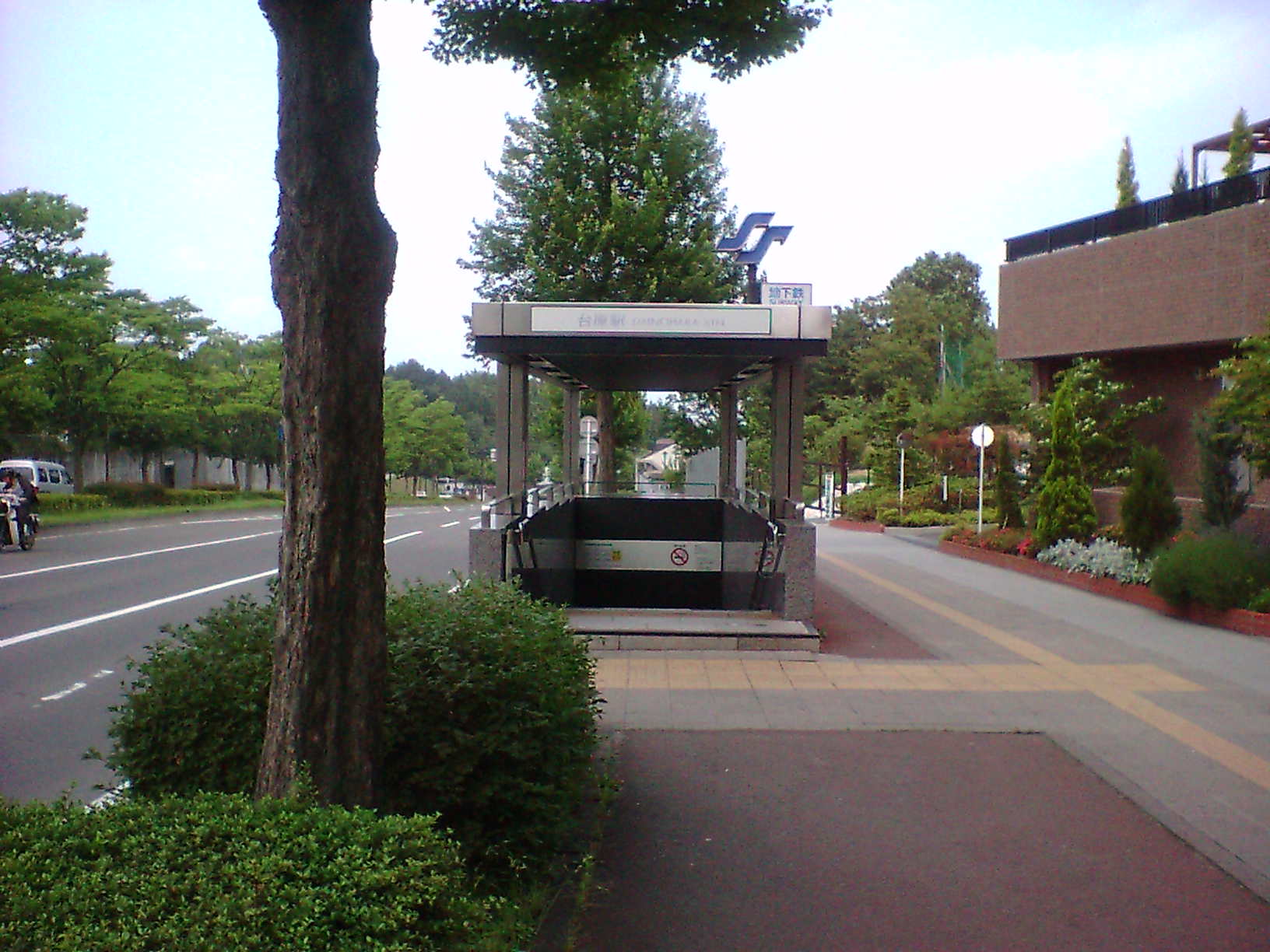Sendai Subway Namboku Line on:
[Wikipedia]
[Google]
[Amazon]
The is a

 *1981 – Construction started
*July 15, 1987 – Line opened from Yaotome to Tomizawa.
*July 15, 1992 – Line extended from Yaotome to Izumi-Chūō.
*March 11, 2011 – Damaged in the
*1981 – Construction started
*July 15, 1987 – Line opened from Yaotome to Tomizawa.
*July 15, 1992 – Line extended from Yaotome to Izumi-Chūō.
*March 11, 2011 – Damaged in the
Sendai City Transportation Bureau Home Page
{{Sendai transit Railway lines opened in 1987 1987 establishments in Japan 1067 mm gauge railways in Japan Transport in Sendai 1500 V DC railway electrification
rapid transit
Rapid transit or mass rapid transit (MRT) or heavy rail, commonly referred to as metro, is a type of high-capacity public transport that is generally built in urban areas. A grade separation, grade separated rapid transit line below ground su ...
line of Sendai Subway
The is a rapid transit system in Sendai, Japan. It is operated by the Sendai City Transportation Bureau. The subway consists of two lines, the north-south Namboku Line, which opened in July 1987, and the east-west Tozai Line, which opened ...
in Sendai
is the capital Cities of Japan, city of Miyagi Prefecture and the largest city in the Tōhoku region. , the city had a population of 1,098,335 in 539,698 households, making it the List of cities in Japan, twelfth most populated city in Japan.
...
, Japan. It connects Izumi-Chūō Station in Izumi-ku, Sendai
is the northernmost ward of the city of Sendai, in Miyagi Prefecture, Japan. , the ward had a population of 215,048 and a population density of 1470 persons per km2 in 90,336 households. The total area of the ward was . Izumi-ku is the twelfth-l ...
, with Tomizawa Station in Taihaku-ku, Sendai
is the southernmost ward of the city Sendai, in Miyagi Prefecture, Japan. , the ward had a population of 234,391 and a population density of 1028 persons per km2 in 113,068 households. The total area of the ward was . Taihaku-ku is eleventh larg ...
. The line is long and has 17 stations. Like many mainline trains and metros in Japan, it uses the 1067 mm track gauge and runs on 1,500 V overhead line. The name "Namboku" means south–north, which is the general direction that the track runs.
The Namboku Line was the world's first public railway to use fuzzy logic
Fuzzy logic is a form of many-valued logic in which the truth value of variables may be any real number between 0 and 1. It is employed to handle the concept of partial truth, where the truth value may range between completely true and completely ...
to control its speed. This system (developed by Hitachi
() is a Japanese Multinational corporation, multinational Conglomerate (company), conglomerate founded in 1910 and headquartered in Chiyoda, Tokyo. The company is active in various industries, including digital systems, power and renewable ener ...
) accounts for the relative smoothness of the starts and stops when compared to other trains, and is 10% more energy efficient than human-controlled acceleration.
Stations
All stations are in Sendai.History
 *1981 – Construction started
*July 15, 1987 – Line opened from Yaotome to Tomizawa.
*July 15, 1992 – Line extended from Yaotome to Izumi-Chūō.
*March 11, 2011 – Damaged in the
*1981 – Construction started
*July 15, 1987 – Line opened from Yaotome to Tomizawa.
*July 15, 1992 – Line extended from Yaotome to Izumi-Chūō.
*March 11, 2011 – Damaged in the 2011 Tōhoku earthquake and tsunami
On 11 March 2011, at 14:46:24 Japan Standard Time, JST (05:46:24 UTC), a 9.0–9.1 Submarine earthquake, undersea megathrust earthquake occurred in the Pacific Ocean, east of the Oshika Peninsula of the Tōhoku region. It lasted approx ...
and subsequently shut down for repairs.
*April 29, 2011 – Line reopens after repair works were finished.
*20 February 2024 – Newly delivered 3000 series begins testing.
*25 October 2024 - 3000 series begins operations.
Rolling stock
* 1000 series 4-car EMUs * 3000 series 4-car EMUsSee also
*List of rapid transit systems
These lists of urban rail transit systems are sorted by the type of system:
* List of tram and light rail transit systems
* List of town tramway systems
* Medium-capacity rail system
* List of premetro systems
* List of metro systems
* List o ...
References
External links
Sendai City Transportation Bureau Home Page
{{Sendai transit Railway lines opened in 1987 1987 establishments in Japan 1067 mm gauge railways in Japan Transport in Sendai 1500 V DC railway electrification